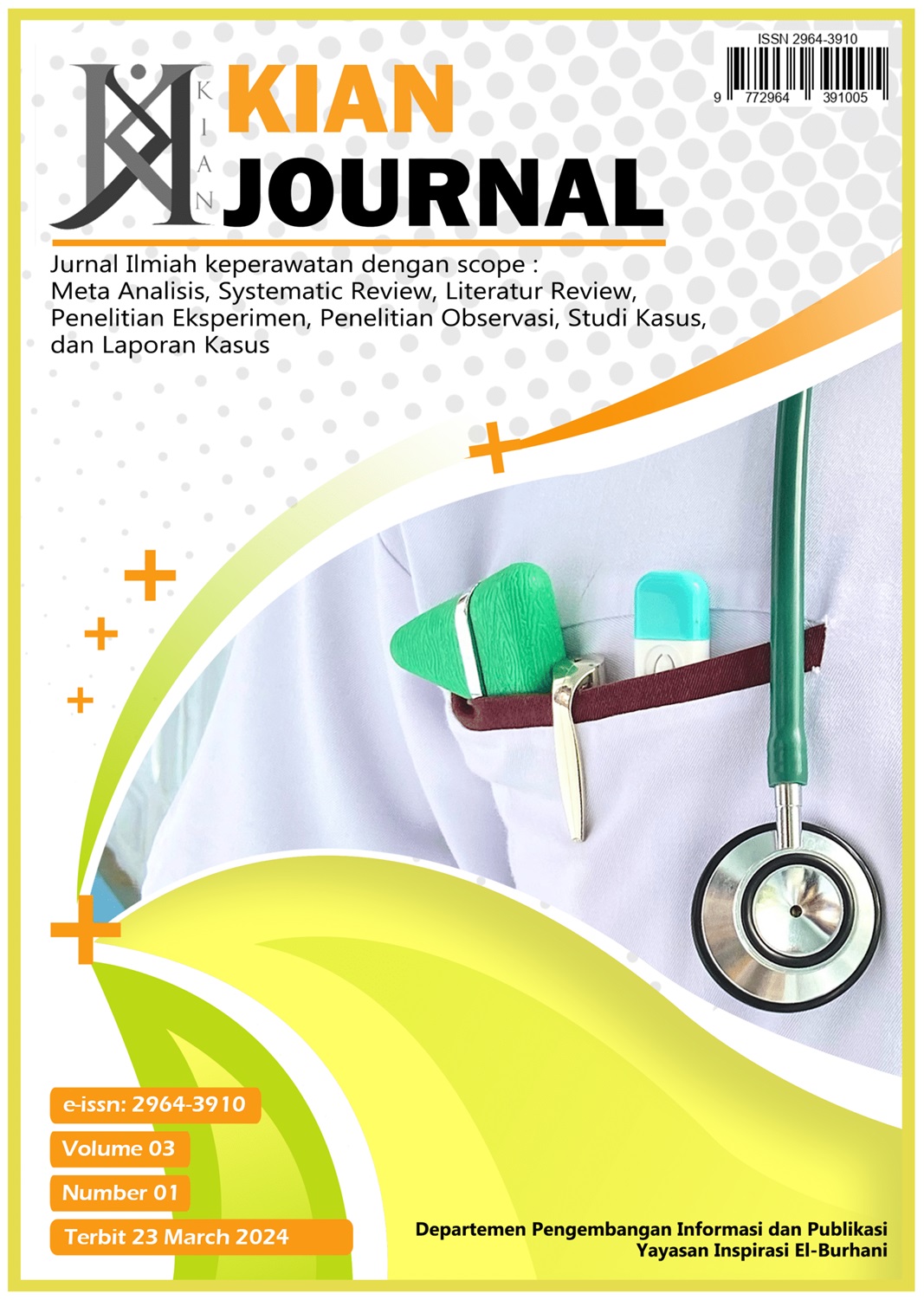Implementation of Modern Wound Care Hydrogel Dressing in Patients with Diabetic Ulcers
DOI:
https://doi.org/10.56359/kian.v3i1.554Keywords:
Diabetes mellitus, Diabetic Ulcer, Hydrogel, Moist dressing, Modern DressingAbstract
Background: Diabetes mellitus is a chronic metabolic disease that can cause various complications, one of which is diabetic ulcers. These ulcers occur due to impaired circulation and peripheral neuropathy, which causes wounds to be difficult to heal and increases the risk of amputation. One method of wound management that has proven effective in accelerating the healing of diabetic ulcers is the use of modern hydrogel dressings. Hydrogel functions as a moist dressing that is able to maintain optimal moisture in the wound area, accelerate the process of autolysis of necrotic tissue, and stimulate the growth of granulation tissue. With a moist and protected wound environment, the process of tissue regeneration is more effective and infection can be minimized.
Objective: This case study is to evaluate the effectiveness of using modern hydrogel dressing as a moist dressing in accelerating wound healing in patients with diabetic ulcers through a nursing care approach.
Methods: This research is a case study with a descriptive method, using a nursing care approach that includes assessment, nursing diagnosis, intervention, implementation, and evaluation. The patient's house is located in the Sinar Mawar Neighborhood Hamlet, RT.001 RW.008, Cigembor Village, Ciamis District. Nursing diagnoses refer to (SDKI), interventions based on (SIKI), and evaluation based on (SLKI), and all documentation is compiled using the SOAPIER method.
Results: Interventions were carried out on one patient with grade 4 diabetic ulcers. Wound care using hydrogel as a moist dressing was performed for 3 visits. Wound evaluation was carried out using the Bates-Jensen Wound Assessment Tool as well as real-time blood sugar (GDS) checks. Results showed a decrease in wound score from 45 to 38, and a decrease in GDS from 518 mg/dl to 269 mg/dl. There were significant changes in the wound tissue, such as the reduction of slough tissue and the formation of healthy granulation tissue.
Conclusion: The use of modern hydrogel dressing as a moist dressing in accelerating diabetic ulcer wound healing. This implementation can be an option for modern non-pharmacological wound care therapy that can be applied at home with a holistic nursing approach.
Downloads
References
Amalia, D., Syari, W., & Anggraini, S. (2021). An Overview of the Implementation of Diabetes Mellitus Disease Management at the Sindang Barang Health Center, Bogor City in 2019-2020. Promoter, 4(2), 97–105.
Aminuddin, M., Sholichin, S. K., & Nopriyanto, D. (2020). Wound Care Module. Samarinda: Diploma Iii Nursing Study Program, Faculty of Medicine, Mulawarman University.
Handayani, L. T. (2016). A meta-analysis study of diabetic foot wound care with modern dressings. The Indonesian Journal of Health Science, 6(2).
Mahendra, A. (2022). The Effect of Moist Wound Healing on the Condition of Wounds on the Feet of Patients with Diabetic Ulcers at Wijaya Wound Care Demak Regency. Sultan Agung Islamic University Semarang.
Maigoda, T. C. (2022). Guava Leaf and Senduduk Leaf Extract Gel: Impact on Inflammatory, Bacteriological, Wound Diameter, and Collagen Markers in Diabetic Foot Wounds. NEM Publisher.
Nurcahyani, D. D., Rosjidi, C. H., & Purwanti, L. E. (2018). Body Image of Diabetes Millitus Patients Who Experience Gangrene. Health Sciences Journal, 2(1), 54–66.
Permatasari, W., Firmansyah, A., Hidayat, N., Purwati, A. E., Supriadi, D., & Setiawan, H. (2023). Studi Kasus Status Nutrisi pada Penderita Diabetes Melitus. INDOGENIUS, 2(2), 56-63.
Setiawan, H., Suhanda, S., Roslianti, E., Firmansyah, A., Fitriani, A., Hamdani, D., ... & Rahman, N. A. (2022). Health Education, Screening and Diabetic Foot Excercise in Cimanggu District, Bogor. ABDIMAS: Jurnal Pengabdian Masyarakat, 5(2), 2410-2415.
Downloads
Published
How to Cite
Issue
Section
License
Copyright (c) 2024 Salsya Haerani, Ade Fitriani, Dadi Hamdani

This work is licensed under a Creative Commons Attribution 4.0 International License.














